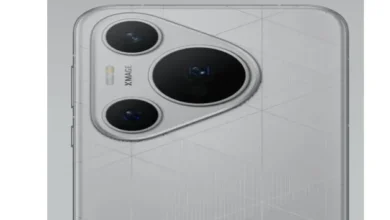
Exploring the Intricacies of Rotating Telescopic Lens Structures in Smartphones
In the ever-evolving landscape of smartphone technology, the integration of advanced camera systems has become a focal point for manufacturers striving to push the boundaries of imaging capabilities. One notable innovation in this realm is the incorporation of rotating telescopic lens structures, which offer users unprecedented versatility and performance in capturing high-quality photos and videos. In this article, we’ll delve into the construction of rotating telescopic lens structures in smartphones, unraveling the engineering marvels that enable these compact yet powerful optical systems.
1. Optical Design and Configuration
At the core of a rotating telescopic lens structure in smartphones lies a sophisticated optical design tailored to maximize performance within the constraints of a compact form factor. The design typically comprises multiple lens elements arranged in precise configurations to achieve desired optical properties, such as magnification, field of view, and image quality. The challenge for smartphone manufacturers is to strike a balance between optical performance and space efficiency. By leveraging advanced materials, such as high-quality glass and specialized coatings, optical engineers can minimize aberrations, distortions, and light loss while ensuring maximum light transmission and image clarity.
2. Mechanical Construction
The mechanical construction of a rotating telescopic lens structure in smartphones is a feat of miniaturization and precision engineering. Despite their small size, these systems incorporate a range of components and mechanisms to enable smooth and reliable operation:
– Lens Barrel: The lens barrel houses the optical elements and provides structural support and protection. It is typically constructed from lightweight yet durable materials, such as aluminum or polymer composites, to minimize weight and maintain rigidity.
– Rotation Mechanism: The rotation mechanism allows users to adjust the orientation of the lens, enabling them to switch between different focal lengths or shooting modes. Precision bearings, gears, and motors ensure smooth and accurate rotation, allowing for seamless transitions between landscape and portrait orientations.
– Focus and Zoom Mechanisms: In some rotating telescopic lens structures, mechanisms for focus and zoom adjustment may be incorporated to provide additional flexibility and control over the composition of the image. These mechanisms may involve moving lens groups or elements within the barrel to achieve desired focus and magnification levels.
3. Image Stabilization and Autofocus
Image stabilization and autofocus are essential features in rotating telescopic lens structures to ensure sharp and blur-free images, especially in low-light conditions or when shooting moving subjects. Various techniques, such as optical stabilization, electronic stabilization, and hybrid systems, may be employed to compensate for camera shake and motion blur. Autofocus mechanisms rely on sensors, actuators, and algorithms to detect and track subjects in real-time, ensuring fast and accurate focus acquisition. By combining image stabilization and autofocus technologies, smartphone cameras equipped with rotating telescopic lens structures can deliver crisp and clear images under a wide range of shooting conditions, such as the HUAWEI pura 70 ultra gets a super-concentrated retractable camera, which can make a powerful appearance and create an exclusive sense of ceremony.

4. Integration with Smartphone Systems
Integrating a rotating telescopic lens structure into a smartphone involves careful coordination between the optical system and the device’s software and hardware components. Smartphone manufacturers must ensure seamless integration and compatibility with existing camera apps, image processing algorithms, and user interfaces to deliver a cohesive and intuitive user experience. Moreover, considerations such as power consumption, thermal management, and electromagnetic interference must be addressed to optimize performance and reliability. Advanced system-on-chip (SoC) designs, power management units (PMUs), and thermal management solutions help mitigate these challenges and ensure optimal performance and efficiency.
5. Applications and Use Cases
The integration of rotating telescopic lens structures in smartphones opens up a world of possibilities for users, enabling them to capture a wide range of subjects and scenes with unprecedented clarity and detail. From stunning landscape panoramas to up-close macro shots, these versatile optical systems empower users to unleash their creativity and capture moments with professional-quality results. Additionally, rotating telescopic lens structures enhance the versatility and functionality of smartphones in various applications, such as augmented reality (AR), virtual reality (VR), and remote sensing. By providing high-resolution imaging capabilities in a compact and portable form factor, these advanced camera systems contribute to the evolution of smartphone technology and its integration into everyday life.
Conclusion
The construction of rotating telescopic lens structures in smartphones represents a convergence of optical innovation, mechanical engineering, and digital imaging technology. By leveraging advanced materials, precision manufacturing techniques, and intelligent software integration, smartphone manufacturers are pushing the boundaries of what is possible in mobile photography and empowering users to capture the world around them in new and exciting ways. As technology continues to evolve, we can expect further advancements and refinements in the construction and functionality of rotating telescopic lens structures, unlocking new possibilities and revolutionizing the way we perceive and interact with our smartphones.



